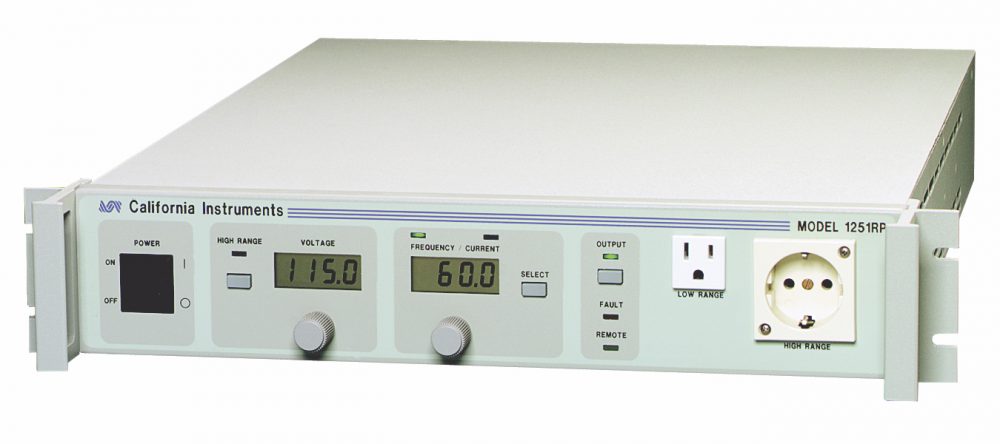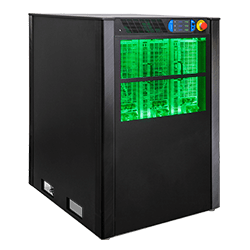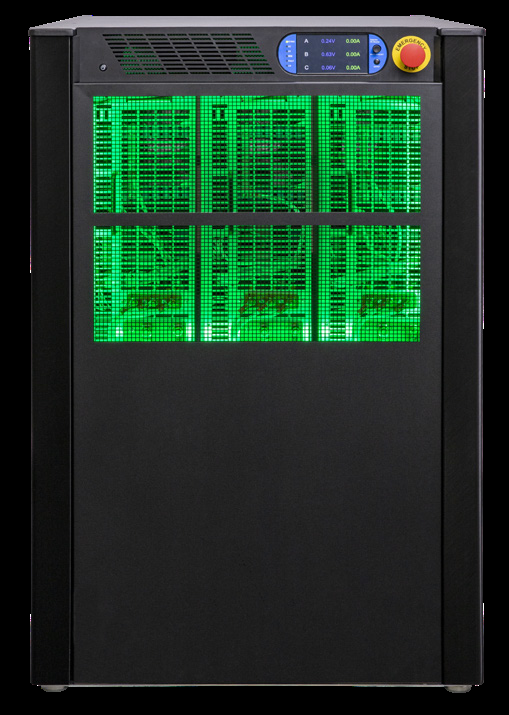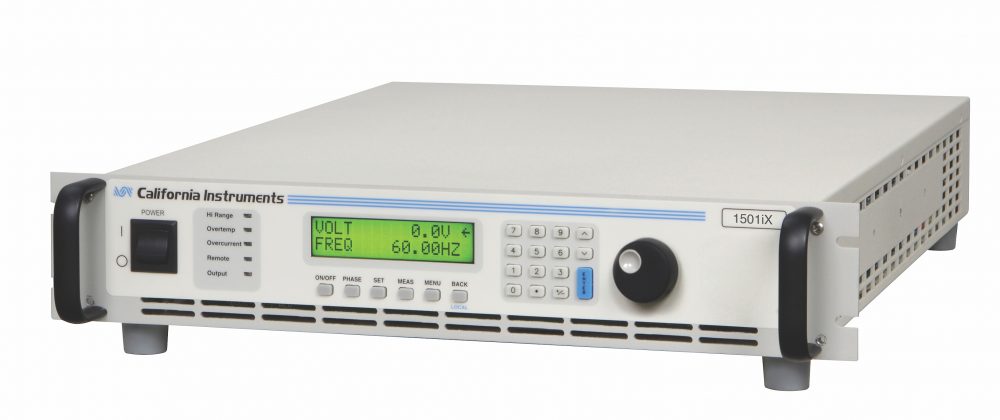The RP Series consists of two models, 2001RP and 2003RP. These units are ideal sources for general purpose AC power applications that require variable voltage and frequency at power levels up to 2000 VA. The 2001RP provides single phase output and the 2003RP provides three phase output. With simple knobs used to set voltage, frequency and current limit, the RP Series provides an inexpensive source of AC power in a small and lightweight package. All RP Series power source models can be used in table-top mode or rack-mounted.
Product Description
The RP Series uses a precision digital sinewave generator to produce a low distortion output . Dual LCD readouts clearly display programmed settings for voltage, current limit and frequency. Load current is measured using true RMS sensing and can be displayed on the front panel as well. Adjusting voltage, frequency and current limit is accomplished using a set of digitally encoded rotary knobs. For ATE applications, both IEEE-488 and RS232C interfaces are available as an option.
The wide output frequency range of 16 Hz to 5000 Hz make the RP Series suitable sources for both commercial and avionics applications. Dual voltage ranges provide maximum output current at any programmed voltage up to 270 Volt (2003RP) or 300 Volt (2001RP). The built in rms. current measurement function eliminates the need for external current shunts or transformers to monitor load current. For front panel operation, the RP Series features simple and intuitive controls for setting voltage, frequency and current limits. Current drawn by the load can be read directly on the large LCD display with 1 mA resolution. With the addition of the RS232C and IEEE-488 interface option, the RP Series sources can be used in automated test environments. Since the RP Series offers a high power to size ratio, requiring limited rack height, they can be used to upgrade existing ATE stations or build new ones. The RP Series provides single or three phase output and is a very cost effective AC power source for Avionics applications, especially in the -AV version. The included PC control program supports transient generation to simulate real-world AC line conditions like brown-outs, voltage sags, surges and frequency fluctuations.
The optional remote control interface allows complete control of all AC source functions and provides measurement data to the controller. This allows the RP Series AC source to be used as a low cost AC test system. A Windows™ Graphical User Interface (GUI) program is included with the interface option. Automatic power cycling and transient generation is made possible with the use of this GUI program. The GUI output control, measurement and transient screens are shown here. For quality assurance applications, measured voltage, current and VA readings can be logged to disk for documentation and analysis purposes. All data recorded is time stamped to create a complete history of each test run. Up to eight often used front-panel setups can be stored in non-volatile memory for quick recall from the PC controller through the interface. If needed, the front panel can be locked out to prevent operator intervention during test runs. The 2001RP and 2003RP offer additional features over the bus such as the ability to select the turn-on or turn-off phase angle of the output voltage. This capability, combined with the peak current measurement function, enables inrush current analysis of a unit under test.
Transient programming is supported by the GUI program with user defined transient lists of up to 100 steps. Available transient functions are voltage step, voltage drop, voltage sweep, voltage surge/sag, frequency step, frequency sweep, frequency surge/sag as well as functions that combine both voltage and frequency changes. The intuitive Windows ™ interface greatly facilitates creating and storing often used transient programs. Transient programs can be recalled from disk and executed once, continuously or a specified number of times. Editing functions such as delete and insert make it easy to modify or expand existing programs. This capability makes it easy to evaluate products for immunity to common AC line disturbances such as brownouts, surges, swells, sags and frequency variations.





